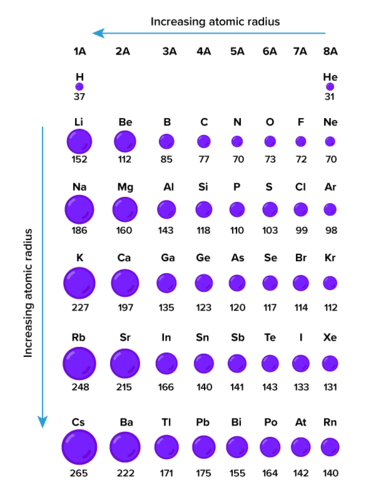As an avid pursuer of scientific knowledge, I was utterly engrossed in the enigmatic realm of atoms when I first stumbled upon the intriguing question: which part of an atom bears the majority of its mass? The answer unravelled a fascinating truth that unveiled the very foundation of our physical universe.

Image: www.inspiritvr.com
The Nucleus: A Cornerstone of Atomic Mass
Atoms, the building blocks of all matter, are comprised of three fundamental subatomic particles: protons, neutrons, and electrons. Among these minuscule constituents, the nucleus, located at the atom’s core, reigns supreme as the primary guardian of mass.
Components of the Nucleus: Protons and Neutrons
The nucleus is composed of two types of particles: protons and neutrons. Protons carry a positive charge, while neutrons, as their name suggests, are electrically neutral. Protons and neutrons possess nearly identical masses, approximately 1 atomic mass unit (amu) each. Electrons, on the other hand, contribute a negligible amount of mass, weighing in at a mere 1/1836 amu.
Calculating Atomic Mass: A Proton and Neutron Tally
The atomic mass of an element is the total mass of its protons and neutrons. To determine an element’s atomic mass, simply add together the number of protons (atomic number) and the number of neutrons (neutron number). For instance, the carbon atom, with an atomic number of 6 and a neutron number of 6, has an atomic mass of 12 amu (6 protons + 6 neutrons).

Image: slideplayer.com
Atomic Number and Mass Number: Defining Characteristics
The atomic number of an element, denoted by the symbol Z, defines its unique identity within the periodic table. It represents the number of protons within the nucleus. The mass number of an element, denoted by the symbol A, is the total number of protons and neutrons. For instance, carbon-12 has an atomic number of 6 and a mass number of 12.
Isotopes: Variations in Neutron Count
Isotopes are variants of an element that possess the same atomic number but different neutron numbers. For example, carbon-12, carbon-13, and carbon-14 are all isotopes of carbon, having 6 protons but differing in neutron counts. This variation in neutron count influences the element’s atomic mass and certain physical properties.
Harnessing Nuclear Power: Applications and Implications
Understanding the nucleus and its mass distribution has profound implications in various scientific fields, including nuclear physics and nuclear energy. Our ability to manipulate the nucleus has led to numerous technological advancements, such as nuclear power generation, medical imaging, and cancer treatment via radiation therapy.
Tips for Grasping the Nucleus and Atomic Mass
- Visualize the atom as a miniature solar system, with the nucleus at its heart and electrons orbiting it like planets.
- Remember that the majority of atomic mass resides in the nucleus, specifically due to the protons and neutrons.
- Understand the concept of isotopes as variants of the same element with different neutron counts.
Which Part Of An Atom Has Most Of Its Mass
Frequently Asked Questions on Atomic Mass and the Nucleus
Q: What is the fundamental difference between protons and neutrons?
A: Protons carry a positive electric charge, while neutrons are electrically neutral. They both contribute approximately 1 amu each to the atomic mass.
Q: Why is the nucleus so dense compared to the rest of the atom?
A: The nucleus, despite its incredibly small size, contains most of the atom’s mass because protons and neutrons are tightly packed together, overcoming the repulsive forces between positively charged protons.
Conclusion:
Unveiling the secrets of the原子 nucleus and its role in atomic mass has illuminated our understanding of the fundamental building blocks of the universe. From the atom’s inception to the harnessing of nuclear energy, this knowledge has been instrumental in shaping modern science and technology. As we continue to delve into the intricacies of the atom, we are greeted with endless opportunities for further exploration and understanding of our world.
Call to Action:
If the enigmatic question of atomic mass and the nucleus has sparked your curiosity, I encourage you to delve deeper into the fascinating field of atomic physics. Continue your exploration, ask questions, and unravel the infinite wonders that lie within the realm of science. Together, we can illuminate the path towards a deeper comprehension of the universe that surrounds us.

